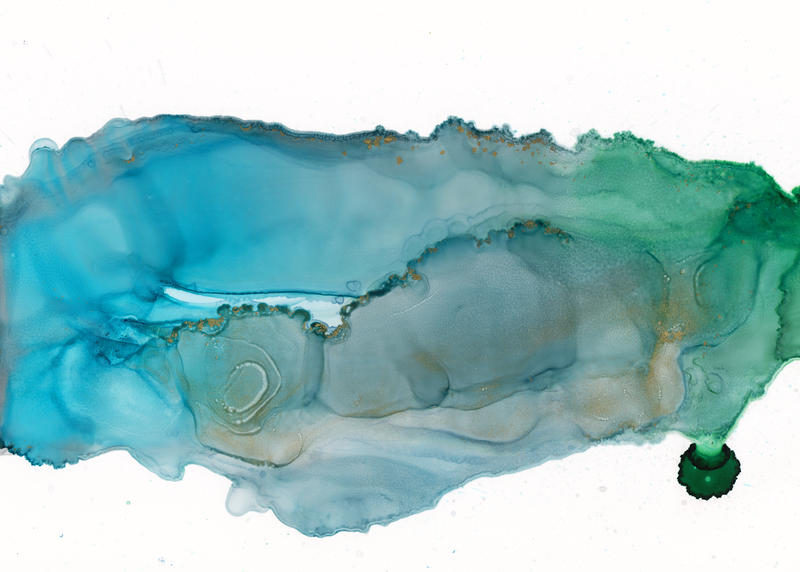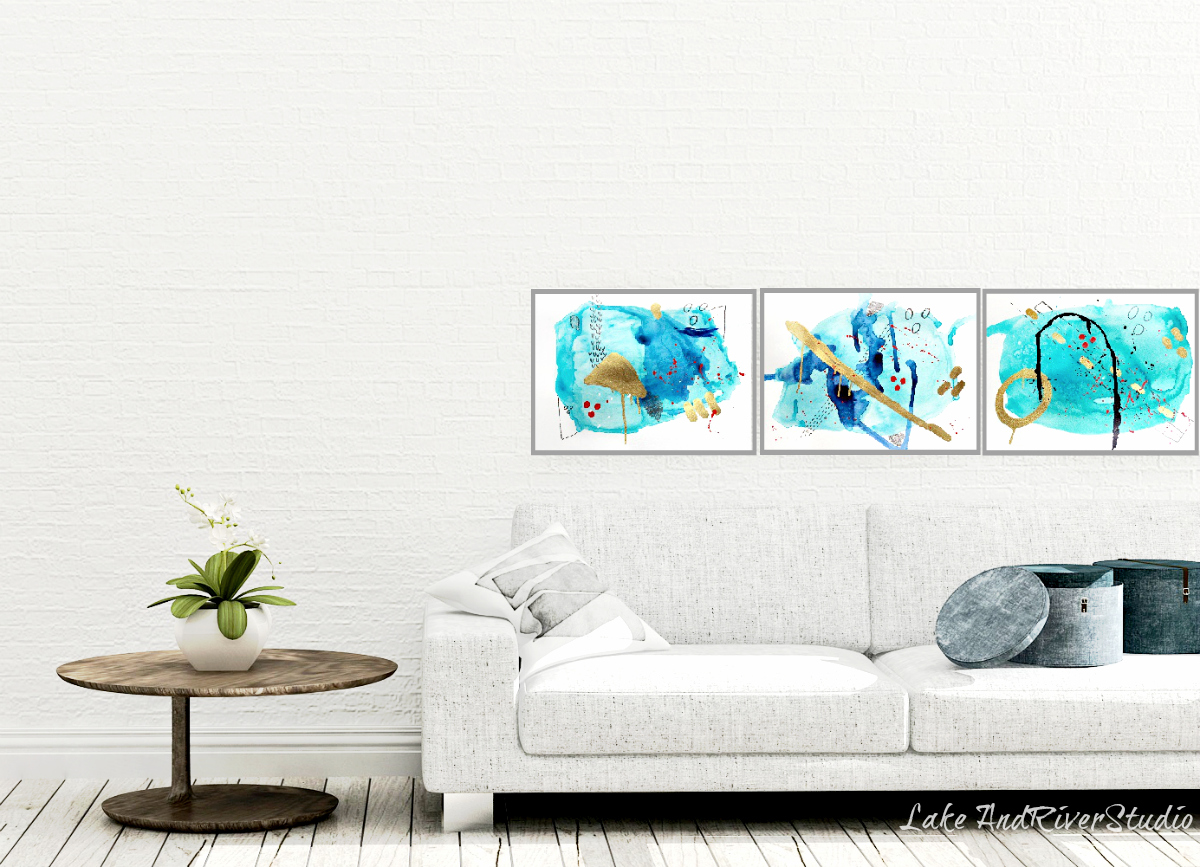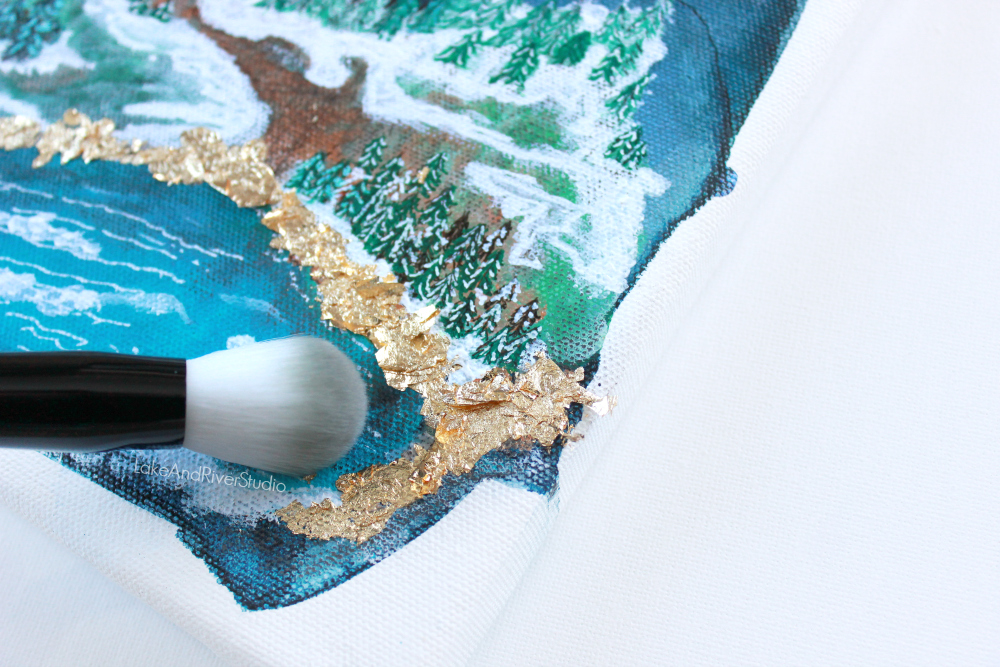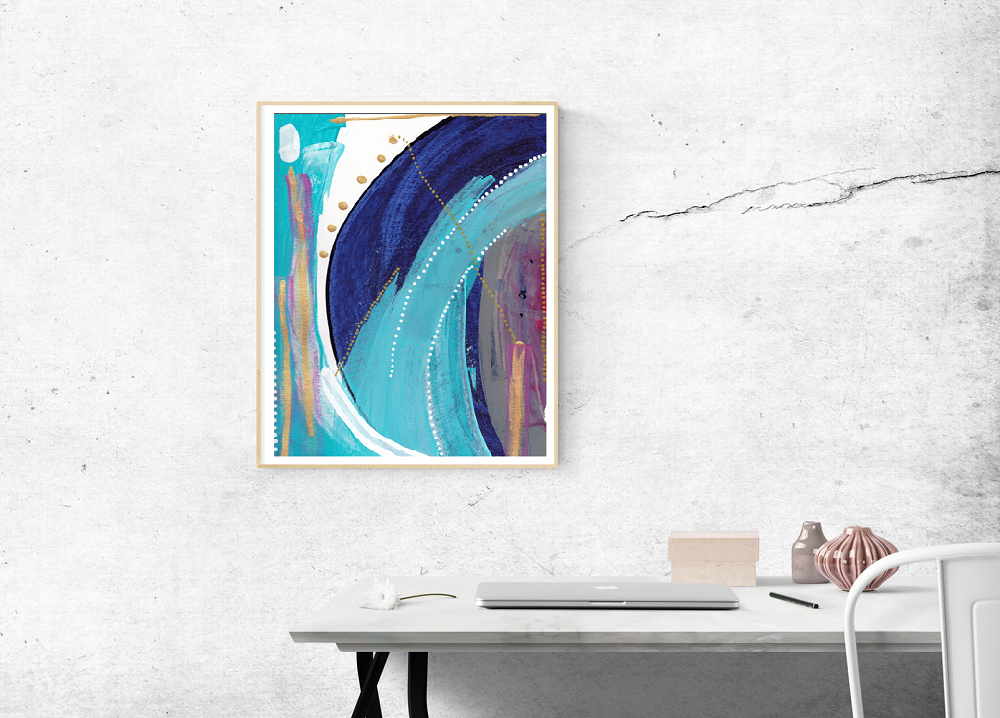
An Abstract Painting Series in Sea Green: Emote
Art is not a need, it is a luxury item. Art will cost whatever price can be supported by the current industry in the current economy. It varies on materials, time spent, location, reputation, and demand. Why does a Mazerati cost more than a Saturn?
The question of price seems to be an issue with anything made by hand, or in small batches, or in a First World country. Quite frankly, if an item is not made by three year olds in a sweatshop being paid $0.03 per day, people are going to complain about it. Call it the modern economy.
So why is original art, or anything made by hand, so “expensive”?
-Let’s break it down.-

Blue Abstract Art for Decorating Your Walls
Original Art Is “Expensive” Because…….
Base Materials
-Canvas quality, wood quality, high end professional paint
High quality materials that endure the test of time are expensive. Some artists build their own stretcher frames and cut their own canvas they purchase in bulk on a role. This saves the artist money on large canvases, but they lose on time. The end buyer won’t save money on these custom stretched canvases since they are paying for the artist’s time. The other option being pre-made canvases, which can become costly since they are expensive to ship. Buying in person is costly since they are only carried at exclusive art supply shops, many of which are located far from the studio, so add the cost of gas and driving. The closest art supply store with professional materials is over an hour from me, without traffic. So add THREE hours of wages and fuel costs to that canvas price.
Professional grade paint that lasts, is quite expensive. Every time I spend $140 on just four tubes of paint, I remember this fact. You also want high end non-yellowing varnish if you want it protected from light. Cheap out and you end up with a yellow painting down the line.
Now add brushes, easel, more brushes, paint thinner, paste, graphite, pastels, spackle, and a million other tools. Some of these last through multiple paintings and would be general overhead costs, and some get used up on each artwork. It all adds up.
 A mini Landscape featuring Lake Superior
A mini Landscape featuring Lake Superior
TIME-Hours on creation
If our car breaks down, we pay hundreds or thousands of dollars to an auto mechanic to fix it. If a pipe bursts in our home, we pay $140 per hour to a plumber to make the problem go away.
And if we want a huge painting that took 40 hours to create, not to mention the student loans that made it possible, we want the artist to charge nothing for his time and even take a hit on the raw materials. What?!? An artist needs a living wage to make that luxury item you have your eye on.
An hourly charge needs to be factored in from start to finish on the work itself, but also clean up time, photography time, listing time, and time spent packaging safely for shipping.

Learn How To Save Money on Art for Your Walls
Overhead costs
After a living wage for hourly, comes the overhead costs like studio space, electricity, shipping materials, photography equipment, website hosting, plugins, credit card transaction fees, storage materials, tech, photography software, filing cabinets…….you get the gist. If a studio does not have these things, it is unlikely you ever found them. Or you likely left their ugly website immediately.
Experience and Reputation
You aren’t just paying for the time used right now for this exact work of art. You also pay for the education and years of experience this artist has accrued over time. An artist sculpting for 30 years is not going to charge the same as an 18 year old just starting fine art school.
Along with experience, reputations take a long time and a lot of work to build. Someone who spent decades on galas, galleries, art fairs, social media, and moving in the right circles….or cultivating a certain persona, will reap the rewards of that work if they are able. No one sells decades of reputation for the price of a print at Cheapo-Mart. Like with any profession, you work your way up and begin charging more for your experience.
-For some simple math, let’s work out a canvas.
You want it 1.5 inches deep gallery wrap, and 40in x 50in. Acrylic paint. Just creating the painting will cost the painter around $200.
Now, let’s say she spent 20 hours painting, two hours photographing and editing. Two more hours listing on the website (or transporting to a gallery). Don’t forget an hour cleanup after each session of painting, so add another seven hours or so. And yet another two hours wrapping it, padding it, getting it in a protected shipping box and driving to the UPS store. Minimum wage in my state is $10/hour. A living wage is well over $30/hour here, but let’s be cheap and say $20/hour. So now it is $200+$660. You wanted it shipped already stretched instead of rolled in a tube. A box that size, plus packing materials is $60. We are up to $920, which is really cheap for such a large canvas. We haven’t gotten to the other overhead costs yet. Or the fact that $20 per hour is how much the fast food joint on the corner by my kid’s school is offering for shift work with no experience.

Fine Art Prints are an Affordable Alternative
There is a certain threshold people need to charge for certain things, not just to live, but also to maintain self respect. Mind you, I’m talking about your regular artist just trying to earn a living. The markups in certain gallery culture is an entirely different topic.
This list is not exactly comprehensive, but it covers most of the reasons original art costs more than a greeting card at a gift Shop. Your mechanic charges more than $4.99 for parts and labor when you blow a head gasket. The creator of that artwork you want deserves the same courtesy.
I get it. I really do. I wish I could find beautiful bedding with quality fabric that I could actually afford. I wish I could get a huge sofa with steel framework so my kids don’t immediately wreck it. I wish archival grade paper were less expensive. However, with cheap goods come social and moral costs. There is always a cost and someone will always pay it in the end, though it might not come from their pocket book. You’re not alone in your disappointment at the cost of the original work. There is a reason prints are so much more popular, right?
And if you made it this far, thank you for your time!





